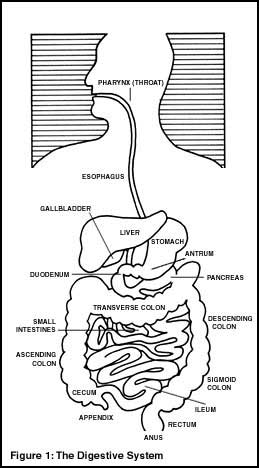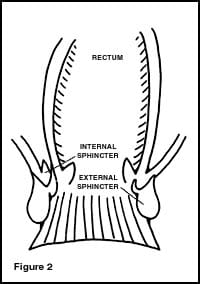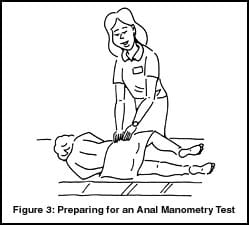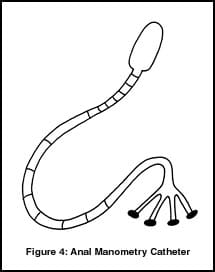What is an Anal Manometry?
There are two small muscles in the anus (opening from the rectum) that help to control bowel movements. These muscles are known as internal and external sphincters (sfink-ters). (Figures 1 and 2)
These muscles are normally closed to prevent uncontrolled leakage of bowel movements. To have a bowel movement, these muscles must relax and open at the same time. Anal manometry is a test that studies how these muscles are working.
 |
 |
Before the Test
- Explain to your child how the test is done at a time that you feel is best. The nurse will help you with this.
- You will be instructed how and when to give your child an enema or suppository before the test.
- It may be helpful to bring a favorite toy to make your child more comfortable during the procedure.
During the Test
- You will be instructed where to register for the test. Someone will bring or direct you to the location for the test.
- The nurses may wear gowns, gloves and plastic glasses.
- Your child will need to take off his/her pants and underwear. He/she will be asked to lie on his/her left side on the table (Figure 3). It is important that your child lie still during the test.
- A tube with a balloon is inserted into the rectum. (Figure 4) The balloon is slowly inflated to different sizes.
- The tube is connected to a computer with a graph. The computer records how well the muscles around the anus are working.
- During the test, parents may be with their child or wait in the waiting area.
- The test will take about 45 minutes.
 |
 |
What Your Child Will Experience
- The amount of air in the balloon is increased and decreased several times during the test. When the air is increased, your child will feel like he/she has to have a bowel movement. This urge will last only a few seconds and will go away as soon as the amount of air in the balloon is changed.
- An older child may be asked to tell the nurse what he/she feels during the test.
After the Test
- Your child may return to a normal diet, play and usual activities.
- Your child's doctor will discuss the results of the test with you in about one to two weeks.



